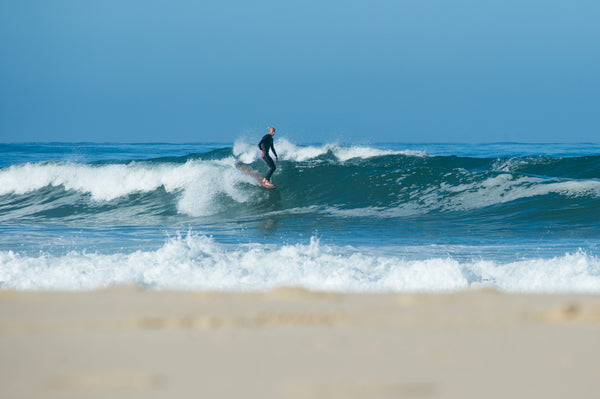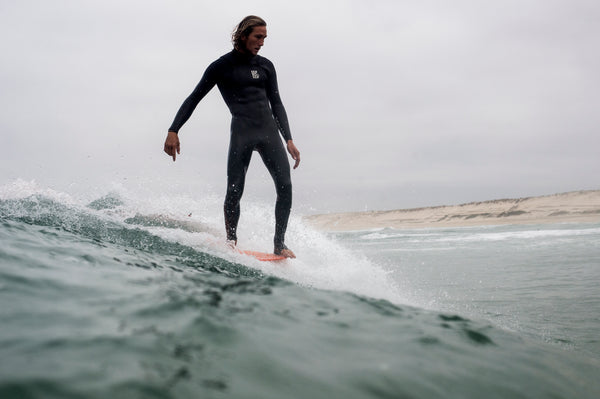At Sen No Sen, we love longboarding.
The longboard is timeless. You start with the longboard, you'll end up on that same board when you're too old and full of arthritis to continue your acrobatics on your shortboard.
The history of the longboard
It's a surfboard, which only changed its name after the revolution of the 60s and the shortboards. It was at that time that we started to call large boards over 9 feet longboards.
Long described as a craft for older people, the fun provided by the longboard has brought it back to the taste of many surfers.
Surfing is not limited to the "shortboard" and among the many boards that can be found such as the bodyboard, the bonzer, the fish, the gun, the longboard is one of the most fun that every good waterman has in his quiver.
Many board shapes exist and in surfing, we essentially distinguish between the "classic" way with a single fin and the "performance" way with narrower tri-fin boards for surfing more powerful waves.
But what we love about Sen No Sen is their single longboard fin .
Good surfers love longboarding
A good surfer is a versatile waterman who knows that the ocean offers a multitude of wave conditions and that each board is more or less suited to each condition.
Having a longboard in your quiver will save sessions where the waves are weak, and for those who become passionate about this large board, the challenge of surfing a maximum of conditions with more than 3 meters under your feet is much greater than taking out your shortboard.
In fact, if you've ever seen longboard "specialists" surfing on shortboards, you can appreciate the skill level of these guys. For example, Antoine and Edouard Delpero, Jérémy Massière, Tim Creignou, Paul Duvignau, or Justine Dupont, among the French surfers. These are savvy surfers who simply choose their boards based on the waves or the sensations they're looking for.
6 Reasons Why Longboarding Is Cool
Here are 6 reasons why we love longboarding so much.
- If you're a beginner, it's a bulky but very practical companion. You'll watch with amusement as all those young, novice surfers try their luck on a small surfboard. More stable and easier to start with, you'll quickly discover the joys of riding the waves. However, be careful with control (and avoid surfing with other people around you).
- For more experienced surfers, longboarding is the end of the blues during weeks of small waves. I admit I sometimes get really excited when I see those small swells of 50 to 80cm, with an 11-second period, that give me the green light to take out my 9-footer.
- Surfers who ride longboards aren't focused on performance, but on having fun and gliding. The atmosphere is often much more relaxed in the water.
- A 9-footer also means easy paddling and catching lots and lots of waves during a session. An "easy" session and pure fun.
- Age is no longer a barrier to progress. On the contrary, good longboarders are often those with experience and maturity in surfing. A feel for the sea and the ability to glide are enough to surf without worrying about physical condition or paddling skills.
- Finally, longboarding is also one of the most difficult boards to surf with style and functionality. It takes years to understand and harness the energy of the wave with such a large board. Walking with your feet crossed, developing your grace so that handling a 3-meter board looks effortless from the beach. Or even doing nose rides. Nose riding was once considered the pinnacle of progressive surfing. In the 1960s, longboards were the standard surfboards, and nothing was cooler than walking on a board and placing your toes on the nose. The epitome of style. To perform Hang Fives or Hang Tens, you need skill, balance, and a perfect understanding of wave mechanics. Besides being fun, the path to progression is long and just as interesting as any other surfing discipline.
Convinced? That's perfect because with summer coming and its small swells, the season for big boards is open!






